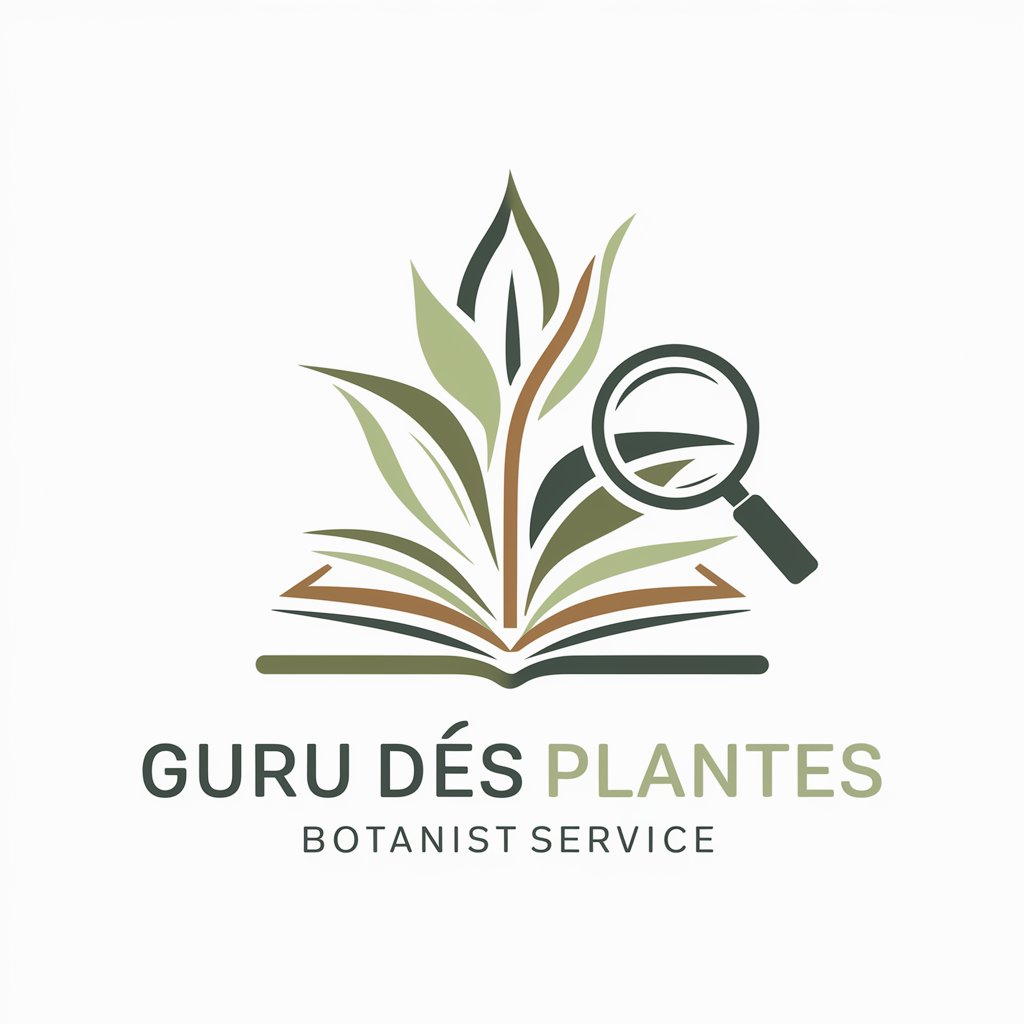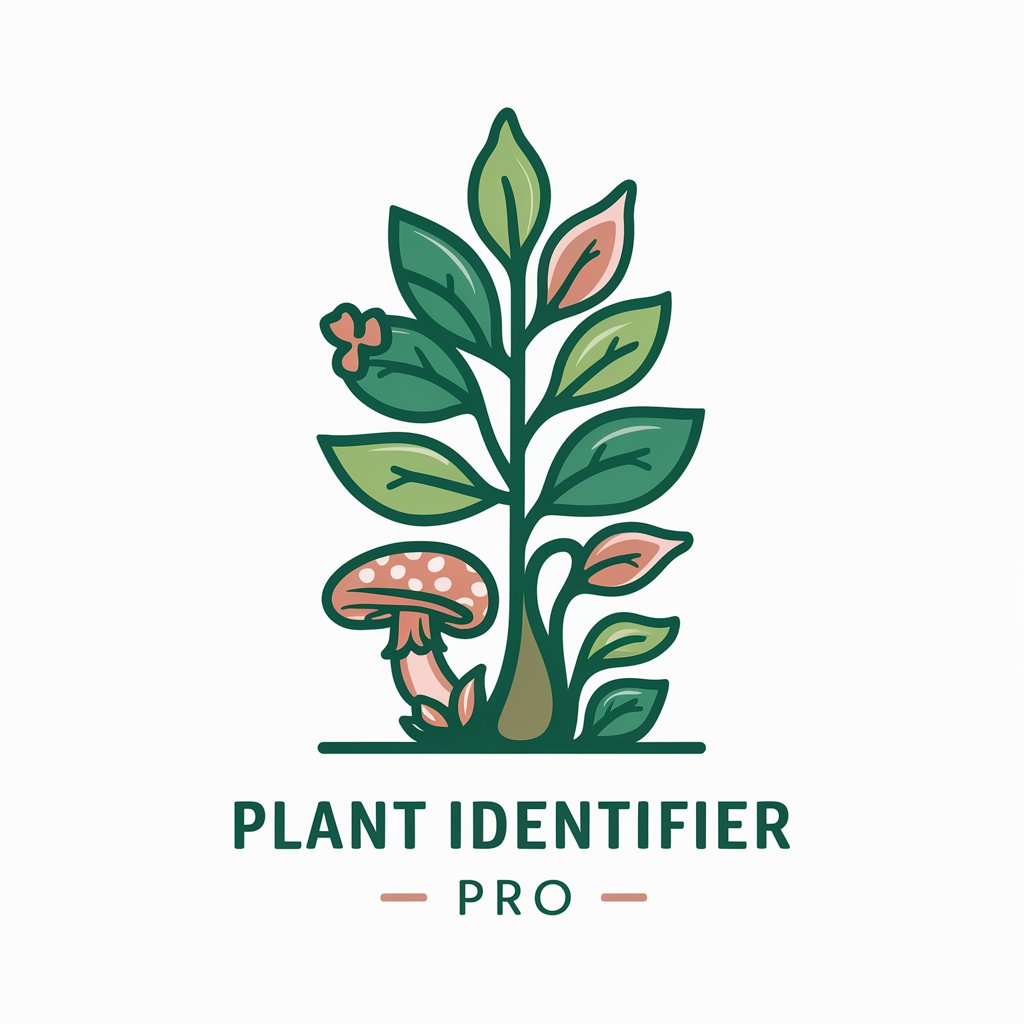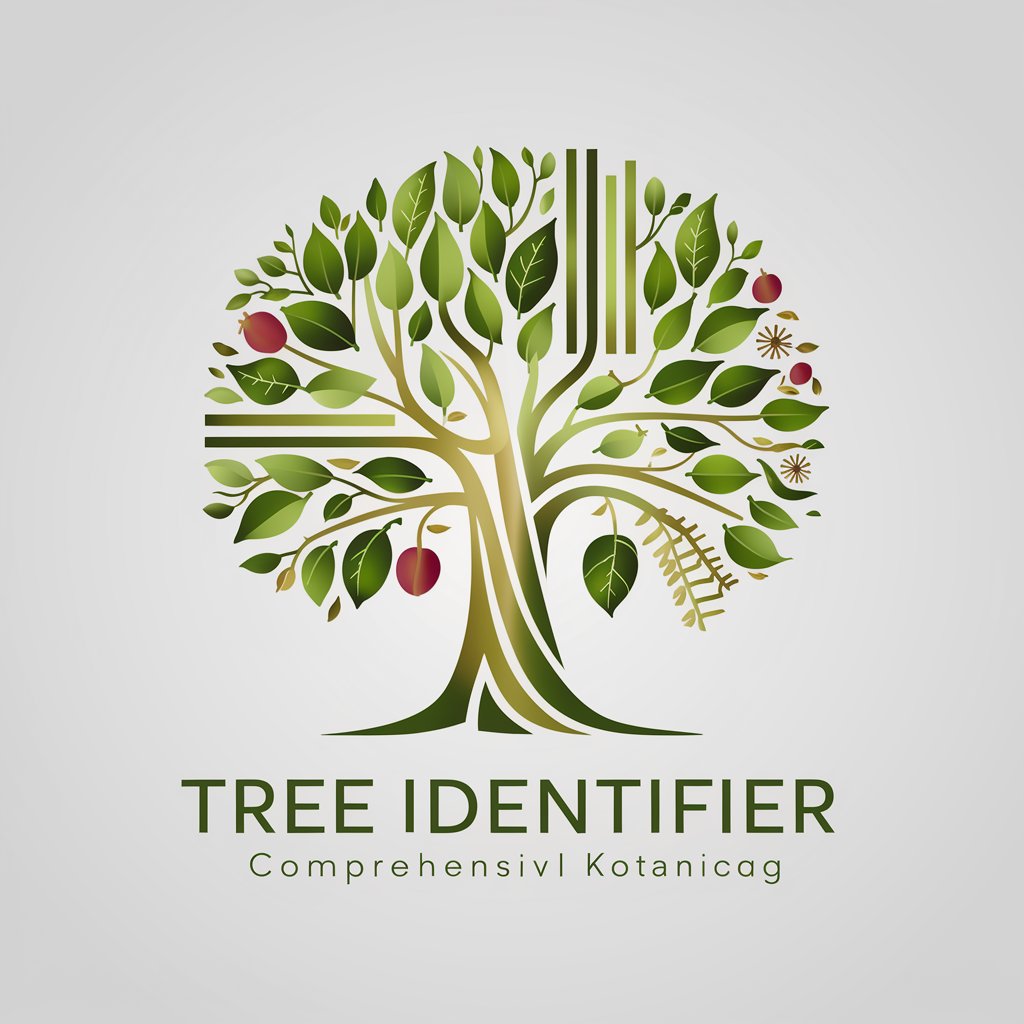
PlantID - Plant Identification Tool

Welcome to PlantID! Start identifying your plants now.
Discover Nature's Details with AI
Identify this plant:
Learn about the scientific factors of this plant:
Search by plant features:
Upload a photo to identify:
Get Embed Code
Introduction to PlantID
PlantID is designed as a user-friendly digital assistant focused on the identification and study of plants. Its primary purpose is to aid users in recognizing various plant species through image recognition and providing detailed botanical information. An example scenario where PlantID is effectively used includes a hiker encountering an unknown flower during a trek. By capturing a photo and using PlantID, the hiker can quickly learn the flower’s name, its characteristics, and any necessary caution regarding its habitat. Powered by ChatGPT-4o。

Main Functions of PlantID
Plant Identification
Example
A user takes a picture of a plant, and PlantID identifies it as 'Taraxacum officinale' (common dandelion), providing information about its edible parts, medicinal uses, and common areas of growth.
Scenario
This function is particularly useful for gardeners who wish to identify and manage weeds or for educators preparing field trip materials.
Scientific Information Access
Example
Provides detailed botanical descriptions, habitat information, and ecological impacts of specific plants like 'Eichhornia crassipes' (water hyacinth).
Scenario
Useful for researchers or students needing comprehensive plant profiles for academic projects or environmental studies.
Community Interaction
Example
Users can share their plant observations with a community of botanists and enthusiasts on platforms like iNaturalist through PlantID, encouraging citizen science.
Scenario
Engages users in biodiversity projects or bio-monitoring programs, enhancing collective understanding of plant distributions and behaviors.
Ideal Users of PlantID
Outdoor Enthusiasts
Hikers, gardeners, and nature photographers who frequently encounter diverse plant species and seek to learn about their environment. PlantID assists them in quickly identifying plants and understanding their uses or potential hazards.
Educational Institutions
Schools and universities can utilize PlantID as a teaching tool, enhancing students' learning experience through interactive plant studies. It serves as a practical resource for botany courses, ecological research, and field trips.
Conservationists and Researchers
Professionals in environmental conservation and botanical research who need accurate, accessible plant information for studies, conservation planning, and monitoring ecosystems. PlantID offers tools that support these activities by providing extensive data and collaborative platforms.

How to Use PlantID
Step 1
Visit yeschat.ai to start using PlantID without needing to sign up for an account or subscribe to ChatGPT Plus.
Step 2
Select the 'Identify a plant' option to upload a photo of the plant you are interested in identifying.
Step 3
Review the identification results which include the plant’s name, characteristics, and possible related species.
Step 4
Utilize the 'Learn scientific factors' feature to explore detailed information about the plant’s habitat, growth conditions, and taxonomy.
Step 5
Make use of the resources available like Flora of North America or iNaturalist for more in-depth study or to validate your findings.
Try other advanced and practical GPTs
L'ami des plantes
Smart AI Plant Care Assistant

AFRO GENESIS - Fashion & Design Hub
Empowering Individuality Through AI-Powered Fashion

Inclusion
Empowering Inclusive Conversations with AI

Lightsaber Crafter
Craft Your Dream Lightsaber with AI

iLlama
Code Smart, Solve Faster with AI

Security Guards, Gambling Surveillance Assistant
Empower Security with AI

Guru des plantes
Your AI-powered Plant Specialist

Flirty Penélope
Charming Banter with AI

Flirty Charmer
Charm and wit at your service!

Be Flirty - Dating Wingman
Elevate your flirt game with AI-powered charm.

Flirty AI
Elevate your mood with AI-powered flirtation

Collars
Empower your text with AI

Frequently Asked Questions about PlantID
What can I do if the plant I’m trying to identify isn’t recognized?
You can use the community feature on platforms like iNaturalist linked through PlantID to seek help from other users or experts.
Is PlantID suitable for academic research?
Yes, it provides reliable sources like the Flora of North America and The Plant List, which can be invaluable for scholarly and scientific studies.
How accurate is PlantID in identifying plants?
PlantID utilizes extensive databases and expert resources to provide highly accurate identifications, though rare or hybrid plants might be more challenging to identify precisely.
Can I use PlantID on my mobile device?
Absolutely, PlantID is optimized for mobile use, allowing you to take photos directly with your device and receive instant identification anywhere.
What should I do if I need more detailed information about a plant?
You can access the detailed botanical descriptions and resources linked through PlantID, such as the Encyclopedia of Life, which provide comprehensive species data.





